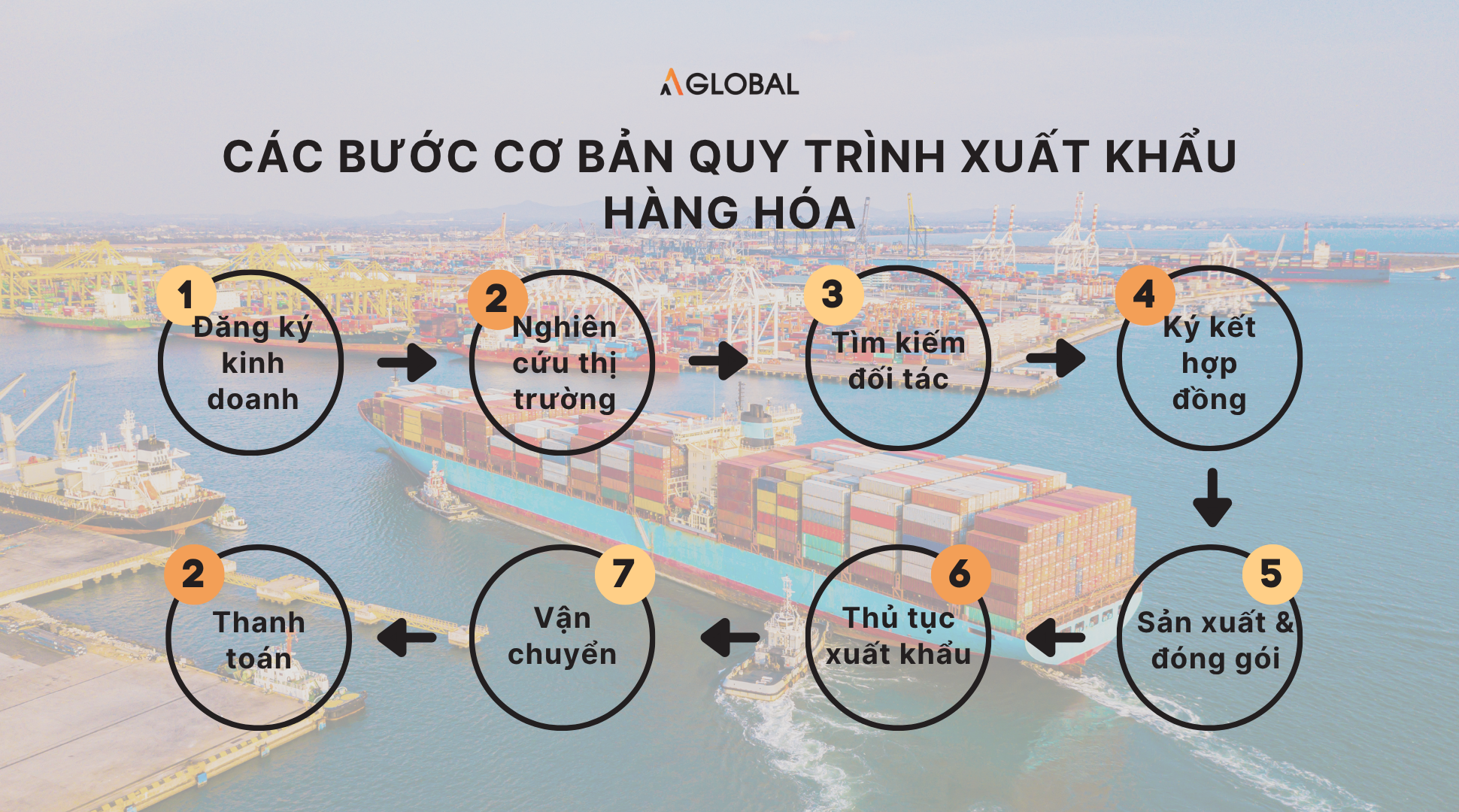
Exporting goods and things to know
In the third quarter of 2025, Vietnam’s export turnover reached USD 128.57 billion, up 18.4% year-on-year and 9.6% compared to the second quarter of 2025. This impressive growth shows that export activities are developing strongly. So, what are the trends and potential of Vietnam’s export sector in the near future?
1. General Overview of Goods Export
In the context of globalization, goods export plays a key role in economic growth and international integration. To better understand this field, it is essential to grasp the concept, significance, and development trends of Vietnam’s export industry today.
1.1. What is Goods Export?
Goods export refers to a business activity in which goods are taken out of a country’s territory to be sold in foreign markets, generating profits and foreign currency. Simply put, it is the process where enterprises or individuals bring domestically produced goods to other countries or territories for consumption.
Depending on the agreement between the seller and the buyer, payments may be made in various currencies, based on the terms mutually agreed upon in the trade contract.

1.2. The Importance of Export to the Economy and Businesses
Goods export is an important driver of economic growth. It helps expand consumer markets, create employment opportunities, and generate significant foreign currency inflows. This allows a country to import machinery, technology, and enhance its production capacity.
Beyond economic benefits, export also fosters international cooperation and integration. When Vietnamese goods are present in many countries, the nation’s reputation and global standing are elevated.
For businesses, export provides access to global markets, increases revenue, and builds brand recognition. International competition also encourages companies to innovate, improve product quality, and move toward more sustainable development.
1.3. Trends and Potential of Vietnam’s Export Industry
Vietnam’s export industry is entering a new phase of growth, with many opportunities to expand markets and strengthen its position in the global value chain. This sector plays a crucial role in economic growth, job creation, and global integration.
According to Vietnam’s Ministry of Industry and Trade, in 2025, import-export activities will focus on five key orientations:
(1) Applying technological innovation and digital transformation
(2) Enhancing risk control mechanisms
(3) Supporting businesses and localities in expanding production and supply chain cooperation
(4) Strengthening data connectivity and integration in export-import management
(5) Promoting Party building and the role of social organizations in sectoral development
With clear strategic direction from the Ministry and proactive innovation from businesses, Vietnam’s export sector is expected to continue sustainable growth, gradually affirming its position as a dynamic and reputable export hub in Southeast Asia.
Read more: 5 Key Orientations for Import-Export Activities in 2025
2. The Export Process
The basic steps in the goods export process include:

The Export Process
- Business registration: Enterprises must obtain all legal documents permitting them to export goods.
- Market research: Businesses need to study customer demand, import regulations and standards, competition, and pricing to create effective export plans.
- Finding partners: Search for reliable business partners in the target market for cooperation in export activities.
- Contract signing: Sign a contract with the partner to make deposits and commit to fulfilling export obligations.
- Production and packaging: Production and packaging must meet agreed-upon standards and partner requirements.
- Export procedures: Complete customs procedures, documentation, and other export-related requirements.
- Transportation: Deliver goods to the designated destination.
- Payment: Carry out payment procedures with partners to finalize the export process.
3. Conditions and Standards in Export Markets

To conduct export activities effectively, enterprises must meet various requirements depending on the destination country and product category. Key conditions include:
- Culture: Study customs, habits, and consumer preferences in the import market to ensure products align with local demand.
- Legal compliance: Follow import country regulations on customs, taxes, certificates of origin, and product standards to avoid legal risks.
- Technical and quality standards: Ensure products meet requirements for quality, safety, design, packaging, environmental protection, and food hygiene.
- Safety and inspection: Goods should undergo inspection and certification before export to maintain credibility and prevent returns.
- Supply chain management: Efficiently manage production, packaging, transportation, and payment to maintain quality and delivery schedules.
- Trademark and intellectual property: Register for brand, design, and patent protection to safeguard interests and prevent counterfeiting.
Understanding and complying with these export market standards helps Vietnamese enterprises enhance competitiveness and expand internationally.
Read more: ISO Certification – Definition, Benefits, and Certification Process
4. Vietnam’s Export: Key and Potential Sectors
In recent years, Vietnam’s export activities have made remarkable progress. In just the first nine months of 2025, total export turnover reached USD 348.74 billion, up 16% year-on-year. The foreign-invested sector (FDI) continued to dominate, accounting for 75.5% of total export turnover, highlighting its significant role in Vietnam’s export growth.

Major export categories include:
- Electronics, computers, and components: Leading the list with USD 109.98 billion, up 39% year-on-year.
- Machinery, equipment, tools, and spare parts: Reached USD 44.27 billion, up 24.7%, reflecting the push toward industrial production and high-tech exports.
- Textiles, garments, and footwear: Still major contributors to total exports, though with slower growth.
In terms of structure, manufactured and processed goods now account for 88.6% of total exports, marking a clear shift from raw materials to high value-added products.
Looking ahead, several sectors are seen as having high growth potential:
- High-tech products (electronics, components) — benefiting from FDI expansion and global supply chain shifts.
- Agricultural, forestry, and fishery products — such as coffee, rice, cashew nuts, and wood — continuing to diversify Vietnam’s export structure.
Read more: Import-Export Surpasses USD 680 Billion as Trade Surplus Continues to Rise
5. Conclusion
With strong potential, sound government direction, and the rise of cross-border e-commerce, Vietnam’s export industry is poised for continued breakthrough growth in the coming years.
Armed with the insights and analysis shared in this article, take the initiative to seize opportunities, strengthen competitiveness, and move further into the global market.
AGlobal – The best cross-border e-commerce solution for businesses.
Register now for free one-on-one consultation tailored to your business sector Here!
